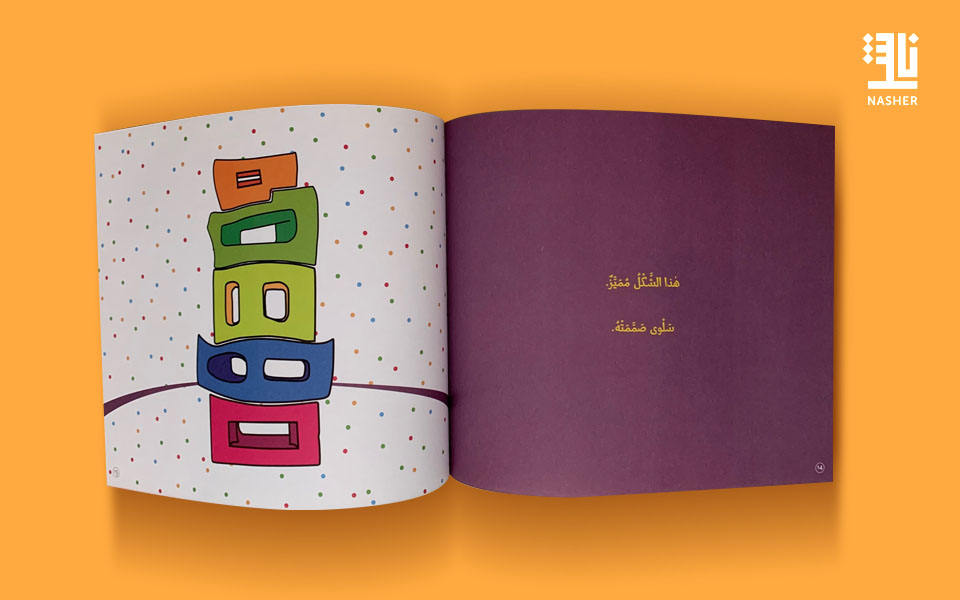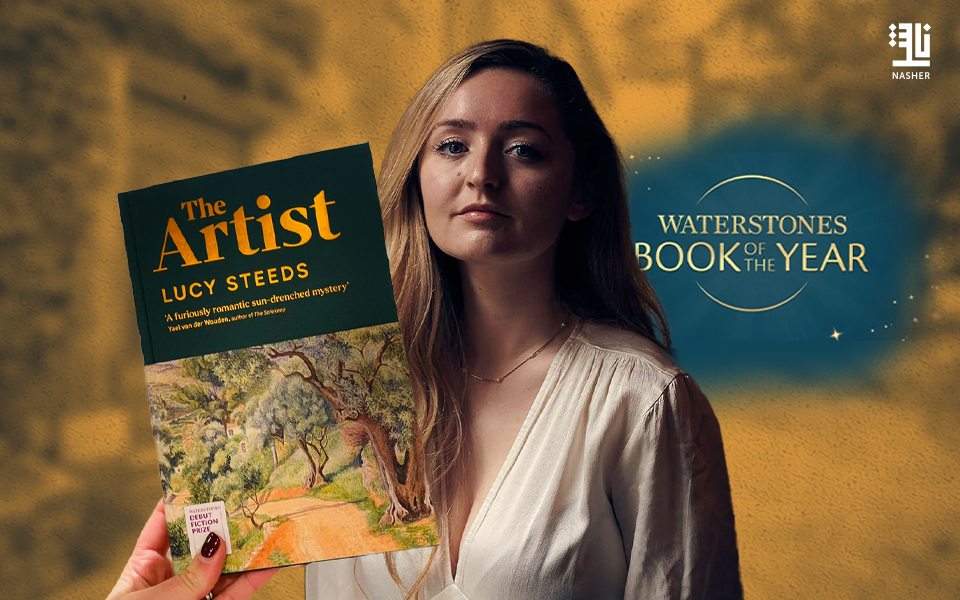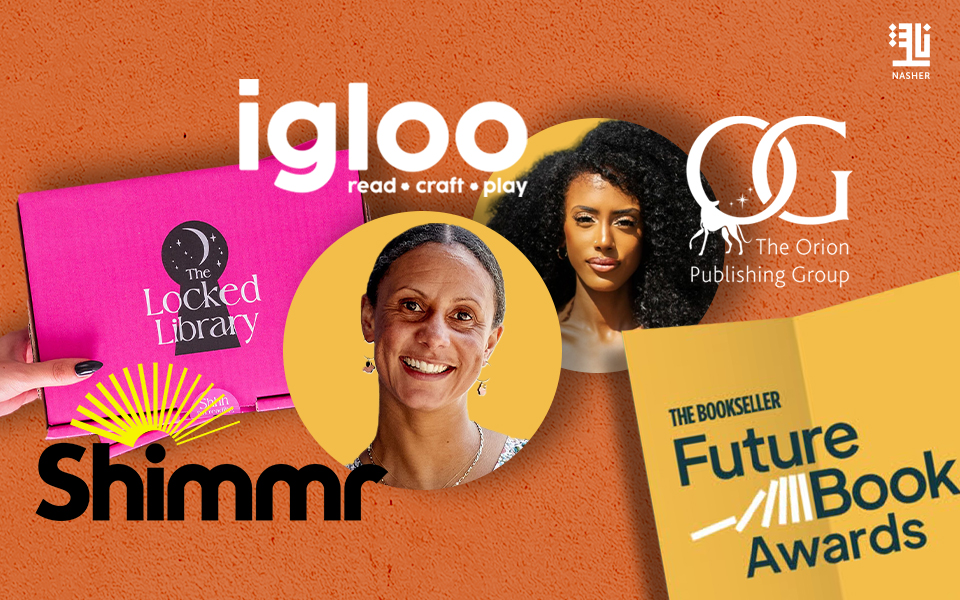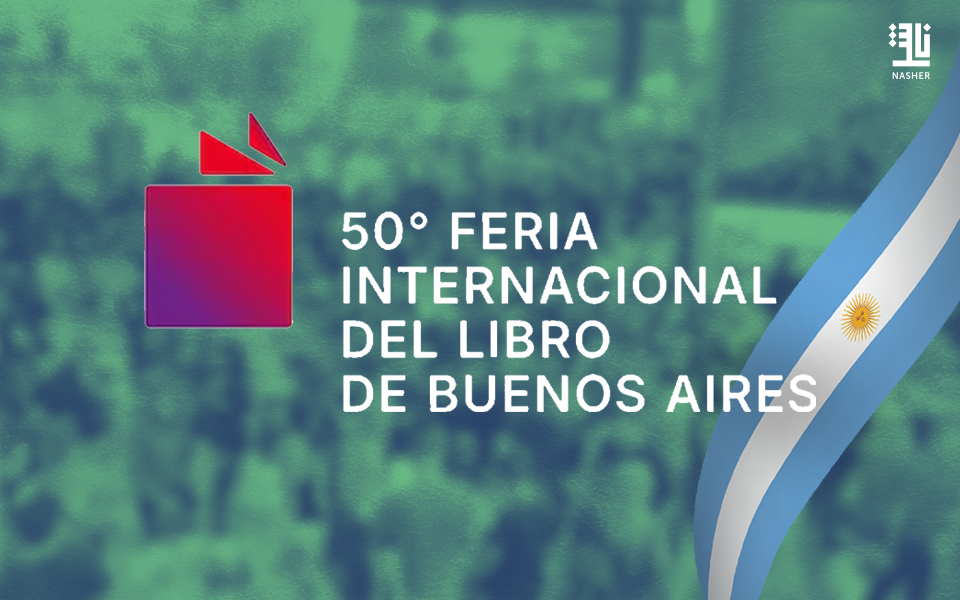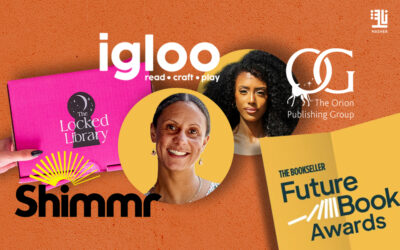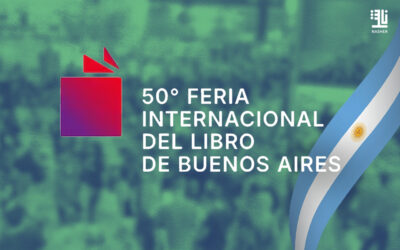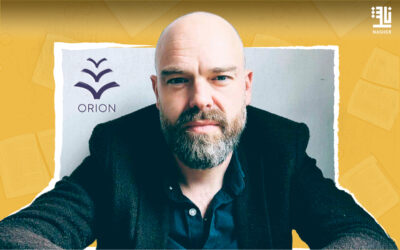Art for many Arabs living in the region is a luxury that not many can afford or indulge in due to the issues that dominates their daily life such as war, corruption, economic struggles and social issues but Reem Najjar, an architect and an art education advocate believes that art is a mean of expression, and that true artists, work despite or in reaction to war, corruption and economic situations. It is their way of expressing themselves in the face of their circumstances. In the eyes of Najjar art is a power that helps people cope with their circumstances at every level. And out of this belief came her art book series, written in arabic and focusing entirely on Arab artist. Nasher met up with Najjar to talk about art, her book series and her vision for Arab children.
The first thing that Najjar wanted to introduce herself with is that she is a great believer in the power of the Arts as a catalyst for change and therefore in the importance of Art education. With an architectural degree from Ecole Spéciale d’Architecture in Paris, and an MBA from Ecole Supérieure des Affaires in Beirut, and after more than a decade working in architecture, Najjar decided to follow her passion and focus on the Arts. And so she created a book series, in Arabic, to initiate school age children to the first generation of modern Middle Eastern artists. The first book is on the artist Saloua Raouda Choucair and it won the best book for children award at the Arabic Book Fair, Beirut 2011. The second book is on the artist Shafic Abboud and she is currently working on the third book.
When asked about her choice of Arab Art as a theme for her book series and why children specifically as the targeted audience, Najjar reiterated her passion for modern Middle Eastern Art and told Arab Weekly how she met some artist and visited their studios and discussed their work with them. This led her to realise that “a very small niche of people, mainly those interested in the Arts, knew about these important artists”. Therefore, she decided to introduce them to a wider audience.
She goes on to explain that her generation did not have an integrated art education at school or in their lives. “I wanted to introduce the younger generations to artists from the region in a fun and interactive way. The book series invites the children to the artists’ universe and make the artworks more accessible.”
One of the first artists that Najjar met and became the focus of her first book ‘Qassida’ (Poem) was Saloua Raouda Chouciar , who she met in the mid nineties and visited her studio several times. Her reason for choosing Chouciar , Najjar states that “because she represents what modernism in the Middle East aspires to be.” Najjar elaborates further that Chouciar “used basic geometric forms inspired by her research on Islamic art as well as her interest in European tradition of avant-garde abstraction as her artistic language. She was able to combine synthesis of Arab cultural traditions and modernist methods. “
Najjar explains that the work which Qassida (Poem) focuses on is a small wooden sculpture (h 33cm) that is comprised of five carved wood pieces arranged one on top of the other to create a vertical sculpture. The rhythm in the sculpture visually recreates the rhythm in Arabic poetry. This is a recurrent theme in Chouciar’s work, as she has created numerous sculptural poems. Najjar states that she chose this piece, as illustrates Chouciar concepts and represents her ideas. In addition, in 1998 that same sculpture was enlarged 10 times and was placed in a public garden in downtown Beirut.
The book itself is comprised of two sections, while the first part is interactive: as Najjar states that she worked very closely with the graphic designer Bassam Kahwagi “to create a fun and playful activity such as drawing, colouring or cutouts. This activity channels the children to begin their discovery of the featured artwork.” The second section is “educational”: the children are introduced to the Artist and they are invited to the Artist’s creative universe, through exploration of themes such as:
- Progression of the work
- Techniques and materials explored by the Artist
- Related artworks (series)
- A glimpse into the Artist’s studio
- A short biography of the Artist
Najjar’s interest in the first generation of Modern Middle Eastern Artists, “the generation that introduced modernism and abstraction to the Middle East, I am fascinated by how these Artists used their culture and their history as tools for modernity.” Therefore it is quite natural for her books to be inspired and influenced by such artists, and for each book a piece of artwork that is representative of the artist was chosen which illustrates a theme that is important in their body of work.
The important aspect of the book series according to Najjar is “to choose an artwork that is accessible to the public: part of a museum collection (not in a private collection) or located in a public space.”
Upon the publication of ‘Qassida’ children began to learn and understand more about modern Middle Eastern artists via group reading with Najjar followed by a small workshop or an activity inspired by the Artist’s work. Even the parents have enjoyed learning about Arab artists as Najjar recalls how one mother thanked her for the book as she getting to know about the artist while reading the book with her child.
The positive feedback that ‘Qassida’ gained and the impact it had on children who had no or little knowledge of Arab art led Najjar to create a book series that showcase multiple aspects of the Visual Arts in the Middle East. ‘Qassida’ focused on a sculpture: form, rhythm, scale and texture. The second book, ‘Abboud’ is about the artist Shafic Abboud and focuses on an oil painting: composition, theme, stages and technique. Abboud was born in Lebanon and lived most of his life in France. He created lyrical abstract paintings, Najjar explains that “he was a storyteller. He narrated stories from his beloved Lebanon, from his childhood, from his village, details from his daily life, from the countryside and from Paris”.
The painting that is the focus of the book is “Les Lumières du Zeyer” ”The Lights of the Zeyer”. The Zeyer is a coffee shop that Abboud visited frequently. Najjar chose this painting because it is representative of Abboud’s concepts and because the “café” theme was important in his work. He painted a series of coffee shops in Paris and in Beirut. Najjar also wanted to highlight the importance of a public space, where you can be part of a community, yet you are on your own.
Najjar states that it is”very interesting to connect the dots and to discover the parallels between these artists. To realise that even though they had shared experiences and concerns they each responded in their own individual artistic language”.
Each book focuses mostly on one specific artwork by the Artist; Saloua Raouda Chouciar and Shafic Abboud . The title of each book is the title of this specific artwork.
There are approximately 128 million children under the age of 15 years old in the Arab region according to Worldmeters, a region that is plagued with wars, corruption and economic struggle and art might not be a priority for these children yet Najjar believes “art is not a luxury; art is a mean of expression.” And that artists work despite or in reaction to war, corruption and economic struggles. “It is their way of expressing themselves in the face of their circumstances. I see art as a power that helps people cope with their circumstances at every level.”
It is this precise power that Najjar wants to equip children with to enable them to grow and learn to be tolerant and artistic, “they are curious and interested in learning. They are like a sponge.”
And for that reason she wants to instil the interest in the arts at a very early age to ensure that the generations to come would be more interested in the arts and more receptive to them. But more importantly Najjar wants that children to take pride in learning about their modern culture and heritage, something that is slowly being eroded through modern form of colonisation.
To achieve this aim, Najjar is working on her third book in the series and planning the next few, in the hope that the series will expand and cover artists from different regions in the Middle East.
Raya Al Jadir

